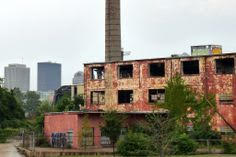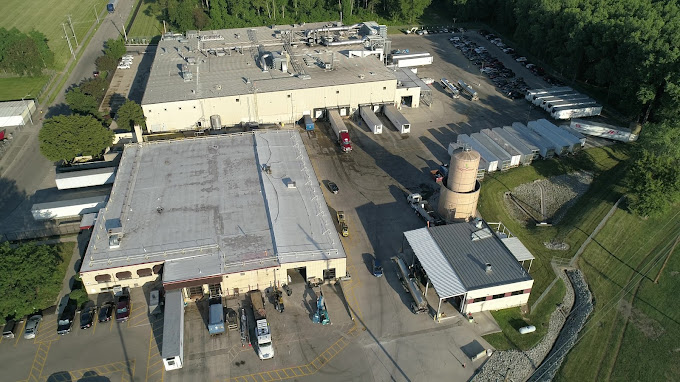By Contributing Author Sheila Crane
Redevelopment of Commercial/Industrial Sites
Known formally as Montgomery County Land Reutilization Corporation, the Montgomery County Land Bank was formed in 2011 following the economic downturn of 2007-2008. In that time period, thirteen jurisdictions signed Memorandums of Understanding (MOU) with the Land Bank. What triggered the recession and housing slump only exacerbated an existing decline in manufacturing jobs, brick and mortar retail, new construction, and development.
In 2012, the Ohio Attorney General’s office created the Moving Ohio Forward Demolition Program and awarded grants totaling $75 million from the national mortgage settlement agreement to use toward demolition and redevelopment. The Montgomery County Land Bank received some of those grant dollars, allowing their program to move forward, resulting in the demolition of 631 buildings at a total cost of approximately $7.5 million.
The Montgomery County Land Bank Is a Partner in Redevelopment


The Montgomery County Land Bank accepted the Dayton Arcade properties under a deed-in-lieu of taxes provision. The property was returned to the city, and a developer restored this beautiful, downtown facility.


West Carrollton’s former Fraser Paper Mill was demolished using financing from the Clean Ohio Fund, Montgomery County Land Bank, and Fraser TIF (Tax Increment Financing).

SugarCreek Packing Company is a national leader in food manufacturing. Working with the Montgomery County Land Bank, the company has significantly expanded their territory within the Miami Valley.

Miami Valley Sand is considered the largest indoor/outdoor sand volleyball facility in the Midwest. The vision for a sports complex within West Carrollton was realized through a Montgomery County Land Bank Planning Grant.
Montgomery County Land Bank Planning Grants
One of the most underutilized resources for redevelopment planning is the Montgomery County Land Bank’s Planning Grant. Funded by the MCLB, an application can be submitted anytime during the year. Not intended for greenfield planning, the primary objective of the grants is to assist in implementing strategies of adaptive re-use, stabilization and redevelopment.
Noteworthy projects include:
2015 Huber Heights – Target Revitalization Plan – Brandt Pike Corridor
2016 City of Clayton – Land Use Plan
2016 Centerville – Centerville Place Shopping Center
2016 Five Rivers MetroParks/City of Dayton – Riverfront Master Plan
2016 West Carrollton – West Central Avenue Strategic Plan
2021 Riverside – Land Use Plan
2021 Dayton – Westwood Neighborhood
2022 Germantown – Downtown Redevelopment Plan
2024 Brookville – Comprehensive Land Use Plan
John ‘Jack’ Kuntz serves as Brookville City Manager. He previously served as the Director of Development for the city of Clayton, and has worked for Harrison and Washington Townships. Jack shares how the MCLB planning grants have been an intricate component of planning and community development for the communities he has served: “The Montgomery County Land Bank Planning Grant is a great opportunity and tool every jurisdiction within the county region should seriously consider when looking towards the future. This grant gives jurisdictions the flexibility to address a cross section of concerns, issues and opportunities within their specific community via the planning process, ensuring future projects and programs are successfully implemented after a thorough and thoughtful plan has been adopted. I’ve been fortunate enough to be a part of teams that have successfully been awarded this grant for two different cities, both times to be used towards carrying out updates to our community’s Comprehensive Land Use Plan. By ensuring community engagement via stakeholder communication during these planning projects, our respective cities can successfully implement future housing strategies by identifying appropriate locations across the city landscape where diversified housing options would be most appropriate. The plans also give city staff strategies and additional tools to appropriately address pocket locations where blight and disinvestment possibly occur, ensuring a healthy and thriving future for our city.”
To learn more about planning grants, government programs, or citizen and investor opportunities, visit https://mclandbank.com/.


